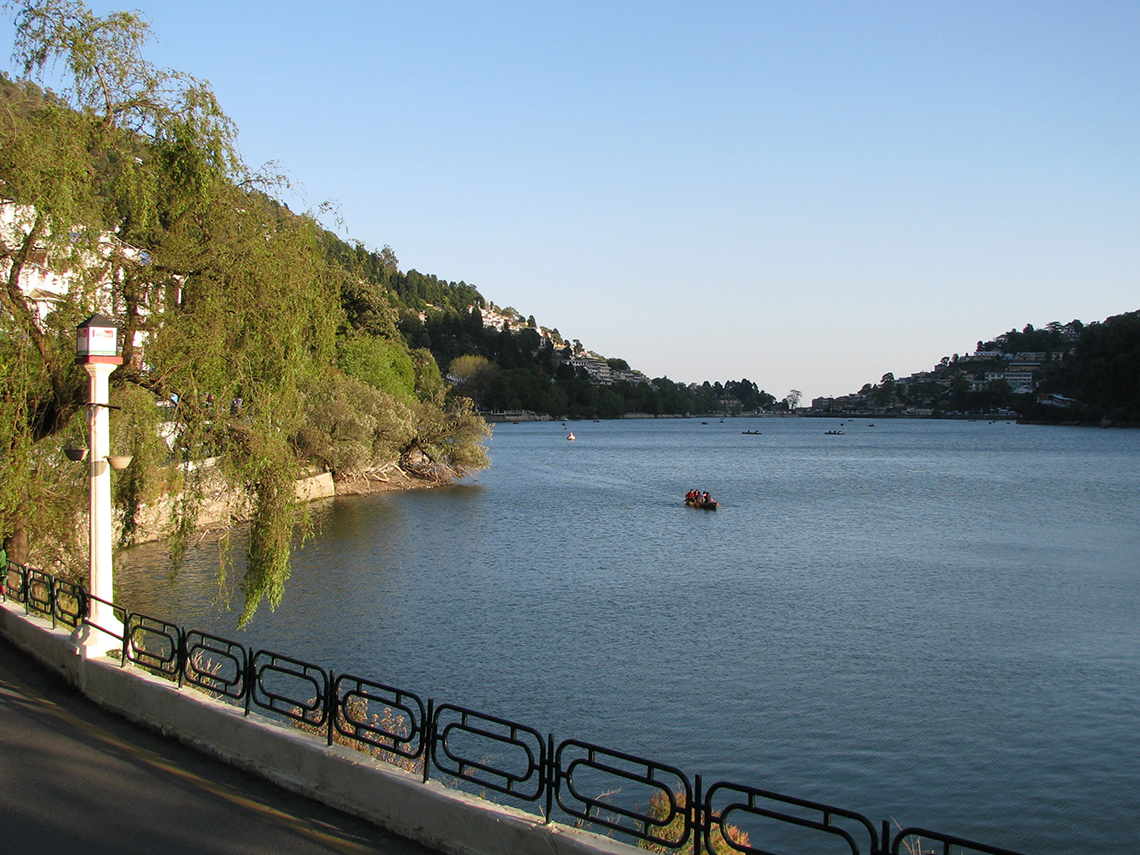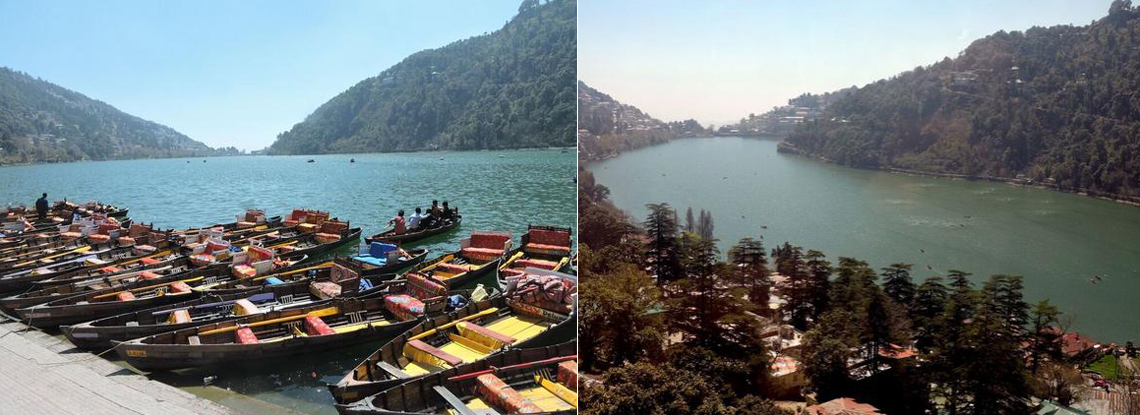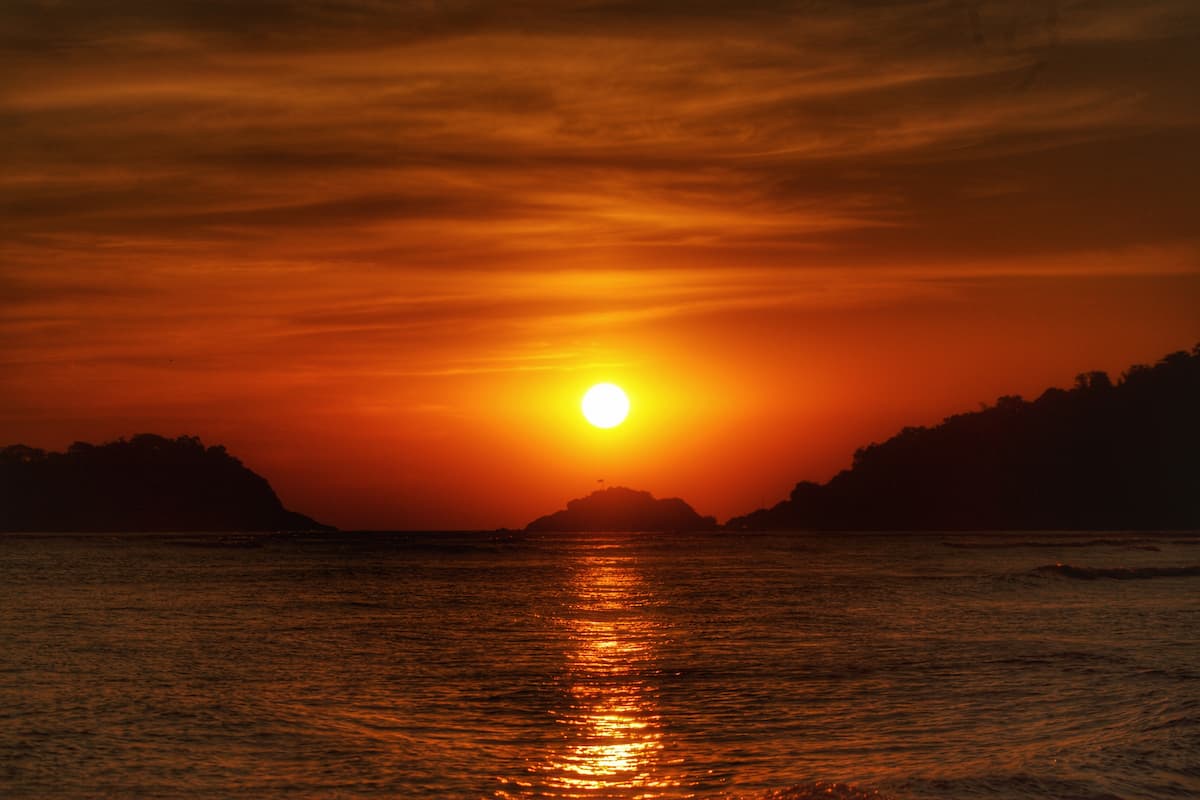Sparkling Lakes – Nainital, Part III
The last post in this series was all about Nainital’s interesting history. In this part, traveler Shireen Bharucha goes exploring the picturesque Naini Lake and its accompanying Mall Road, and other beautiful points of interest in Nainital.
The nucleus of Nainital is the Mall Road as also its natural fresh water lake, surrounded by seven mountains, the Naini Lake. According to mythology, three sages, Atri, Pulastya and Pulaha came to Nainital on pilgrimage and found their destination devoid of water. They dug a huge hole in the ground and meditated on Tibet’s sacred Manasarovar Lake, which had plentiful water. So great was their power of meditation that the hole filled with gushing water. Known to some as ‘the lesser Manasarovar’ a dip in this lake is as good as a dip in the actual Manasarovar Lake. It is further believed that Goddess Sati’s eyes (naina) fell in this region as Lord Shiva carried her charred body, parts of which dropped at 64 different places, which are known as Shakti Peeths. Hence the name Nainital (naini – eye and tal – lake).

The Mall Road constructed by the British is the main road running parallel to the lake, and the principal commercial centre, bustling with shoppers for locally made items, which include textiles, handicrafts, artificial jewellery and especially the famed decorative candles sold at almost every shop. We buy an exquisitely carved wax figurine for Rs.250/- and a few herbal soaps, in enticing pastel shades, for Rs.65/- apiece. Several restaurants and eateries line the road. A lunch consisting of a large bowl of chicken soup and a plate of momos at Machan, which serves tasty Indian and Chinese cuisine, costs us Rs.246/-.
Boating is open from 9.00 a.m. to 6.00 p.m. daily. We hire a row boat for Rs.210/- (the other option being a swan shaped pedalling boat) and do a full round of the serene, sparkling emerald green, pear shaped lake, while our boatman, Mohan, points out to us important landmarks on the banks of the lake, especially the places of worship, as the Naina Devi Temple, St. John in the Wilderness – an Anglican church, the Jama Masjid and the Singh Sabha Guradwara reside in harmony side by side. He also has some knowledge of the history of Nainital, which he imparts, making the sail interesting and enjoyable. He tells us the Yacht Club, established in 1910, is one of the highest sailing clubs in the world. The fleet of mini yachts, a century old, have eye catching candy-striped sails. The Nainital yacht regatta is held here. Boating and swimming are also taught in the lake. The northern end of the lake is called Mallital, while the southern end is called Tallital.

Next we visit the Naina Devi Temple located at Mallital. The presiding deity of the temple, Maa Naina Devi, is represented by two ‘netras’ or eyes. The deities of Mata Kali and Lord Ganesha flank the main deity. The circular, white marble structure of the temple with its two tiered red roof is simple but pleasing. The temple attracts a throng of devotees, many of whom line up for personal pujas in the compound. A tree like structure draped in red and gold fabric, is where devotees tie their written pleas. A nice view of the hill station overlooking the lake can be had from here. Carp can be seen swimming in the lake.
The cable car to Snow View, 3 km from the town, starts at Mallital. The ropeway operates seven days a week from 10 a.m. to 5 p.m. Two trolleys carry passengers up and down alternately. We take the ride which costs Rs.150/- per head. Other options of getting to Snow View are by local taxis or trekking. From the cable car we get a superb view of Naini Lake.
An old brass plaque at Snow View states that Naina Devi was India’s highest peak in the British Empire. In 1865, Darjeeling, till then a part of Sikkim, was annexed by the British and the honour went to the mighty Kanchenjunga. Snow View offers a bewitching spectacle of languid clouds hovering over the shimmering snow clad Himalayan Range, which includes the soaring peaks of Naina Devi, Trishul and Nanda Kot, looking down benignly, over the town and the lake. For better viewing, one can look through the giant binoculars available, charged at Rs.10/- per minute. We walk through a rhododendron forest. Unfortunately the trees are not in full bloom, but we come across a few clusters of these delightful deep red blossoms. There is a small marble temple dedicated to Dev Mundi enshrining images of various Hindu gods and goddesses on the premises, as also an entertainment park called Mountain Magic which has bumper cars and facilities for go karting. A point called Lake View offers an impressive vista of the lake. Tea and snacks are also available.
We now head for the Pt. G.B. Pant High Altitude Zoo. Private vehicles are prohibited from plying on the roads of Nainital. They have to be parked at designated places and local transport has to be used. The zoo has jeeps available on the Mall Road that ply up and down, the charge being Rs.30/- per person. We hop on to one and are offloaded far off from the ticket window. To the discomfort of many, the path to the window is extremely steep and challenges the stamina of the old and young alike! Entry fee is Rs.50/- per head. Timing is from 9.30 a.m. to 4.30 p.m. It is closed on Mondays and all public holidays.
Animal sighting is good. The Royal Bengal Tiger paces his cage in agitation, the Leopards loll around lazily and the two Himalayan Bears are half asleep. The Himalayan Goral, also known as the Grey Goral, a goat like creature is alert and stares at us intently. This rare creature is listed as a nearly threatened species. The pair of cute russet furred Red Pandas greedily munch on bamboo. The name panda is said to be derived from the Nepali word ‘ponya’ which means bamboo or plant eating animal. The Barking Deer and Sambar graze peacefully. The very attractive, brightly plumaged, Chinese pheasants – the Lady Amherst’s Pheasants and Golden Pheasants – strut around arrogantly!

Our last stop is the Eco-Cave Park, located in Mallital, 1 km away from the Mall Road, which is open daily from 9.30 a.m. to 5.30 p.m. Entry fee is R.40/- per head. This natural park features six small caves, which are named according to the animals they resemble – tiger, panther, bat, squirrel, ape and flying fox. Frankly we do not see the resemblance! People enter the cave at one end and come out at the other, but the uneven tunnels become narrower as one progresses and at places there’s no option but to crawl through! The main attraction is the musical fountain which plays in the evenings in May and June only, so we miss out on this. The cafeteria is closed. The panoramic view of the town shrouded in mist, from this elevated park, is marvelous and there are some pretty flowers that we admire.
Since traffic is prohibited on the Mall Road between 6-9 p.m. we hasten back to the resort, but on the way we stop to admire the splendid architecture of the stately Uttarakhand High Court building which was constructed in 1900 AD and is located at Mallital. A beautiful garden in the foreground and the Naina Peak towering in the background makes for a captivating picture. Unfortunately, no photography is allowed within the complex, though we are free to roam around and survey the place.
After points of interest within the town, Shireen Bharucha sets out to explore the various ‘tals’ and sites on the outskirts of Naintal. To read part 4, click here.
Quick Links
Sparkling Lakes – Nainital, Part I
Sparkling Lakes – Nainital, Part II
Sparkling Lakes – Nainital, Part III
Sparkling Lakes – Nainital, Part IV
Sparkling Lakes – Nainital, Part V
The views expressed by the author are in her personal capacity.


